
FBI Arrests Gavin Newsom’s Former Chief of Staff as Federal Indictment Reveals Extensive Financial Scheme
FBI Arrests Gavin Newsom’s Former Chief of Staff as Federal Authorities Reveal Extensive Financial Scheme
Dana Williamson, once one of California’s most influential and respected political strategists, now faces the full weight of a federal indictment. Her arrest on Wednesday marks a dramatic turn in a career that spanned decades at the highest levels of state government. According to federal prosecutors, Williamson is accused of orchestrating a complex, multi-year financial scheme involving political funds, falsified business records, fraudulent tax filings, and efforts to conceal her actions from investigators.
Her indictment, which includes 23 federal charges, has drawn national attention—not only because of the scale of the allegations but also because Williamson served as the chief of staff to Governor Gavin Newsom during nearly the entire period in which the alleged misconduct occurred. For many, the case raises larger questions about political accountability, internal oversight, and the vulnerabilities within systems that handle campaign and public-related finances.
A Trusted Adviser With a Long Political History
Before her arrest, Williamson was widely viewed as one of the most experienced political hands in California. She built her reputation under former Governor Jerry Brown, serving as both a cabinet secretary and senior adviser. She later transitioned to Newsom’s administration, stepping into the role of chief of staff in 2022.
In Sacramento, she was known for her organizational discipline, strategic thinking, and influence over key initiatives. Her job required navigating legislative priorities, managing the Governor’s staff, coordinating with state departments, and maintaining the operational flow of the Governor’s Office.
Given the power and responsibility of that position, the allegations have magnified public interest in the case.
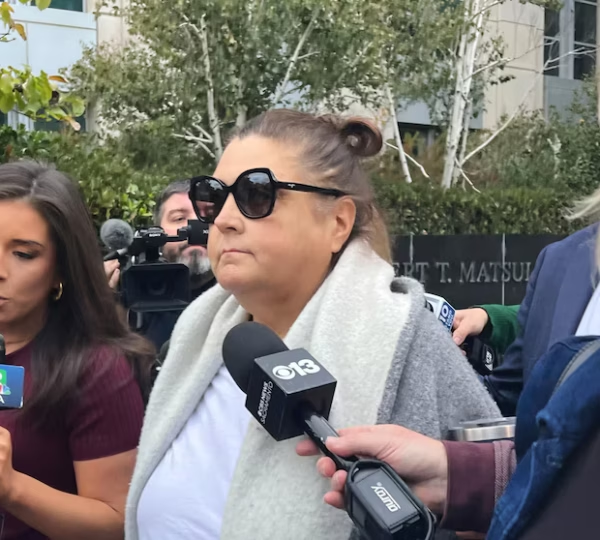
The Alleged Misuse of a Dormant Political Campaign
At the center of the indictment is a dormant political campaign account that prosecutors say Williamson and her associate, Greg Campbell, exploited. According to the U.S. Attorney’s Office, the pair transferred approximately $225,000 out of the fund by routing the money through multiple business entities, effectively laundering the origin of the funds.
The payments were then labeled as compensation for a “no-show job,” meaning the work being paid for was never actually performed. Prosecutors say the purpose of the arrangement was to disguise the political funds as legitimate business income.
The complexity of the transactions, the use of multiple entities, and the deliberate nature of the documentation all point, according to investigators, to a calculated effort to hide the financial trail.
How the Scheme Allegedly Operated Behind the Scenes
Court documents outline a methodical process that allowed the defendants to hide the true source of the funds. The indictment describes:
-
Funds withdrawn from the dormant campaign
-
Transfers routed through shell companies
-
Invoices created for nonexistent services
-
Bank transactions structured to appear legitimate
-
A pattern of financial movement designed to avoid detection
Prosecutors assert that the operation was not a momentary lapse in judgment but a sustained effort that unfolded over a period of nearly three years.
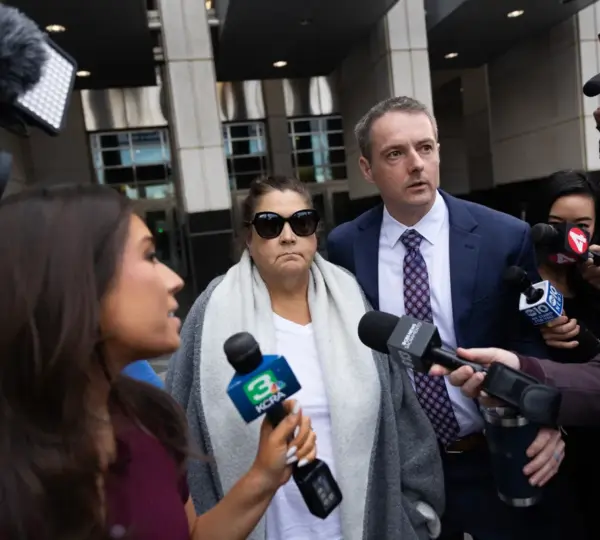
The Timeline That Raises Questions
According to investigators, the alleged scheme ran from February 2022 to September 2024—a timeframe that overlaps almost exactly with Williamson’s service as Newsom’s chief of staff. This detail has prompted political analysts to begin questioning:
-
How the scheme went undetected for so long
-
Whether internal financial controls were insufficient
-
Why the dormant campaign account was vulnerable to abuse
-
What safeguards exist to prevent similar misconduct in the future
While no evidence currently links Governor Newsom to the scheme, the proximity of the alleged misconduct to his administration has raised inevitable political concerns.
PPP Loans and Alleged Attempts to Deceive Investigators
The indictment also includes allegations tied to the Paycheck Protection Program (PPP)—a federal pandemic relief initiative designed to help small businesses maintain payroll during COVID-19. Prosecutors claim that Williamson obtained PPP funds under false pretenses and later attempted to hide irregularities in the loan documentation.
When she received a civil subpoena in early 2024, Williamson allegedly responded by creating:
-
Fake contracts
-
Backdated agreements
-
Fabricated business documentation
These actions, according to the indictment, were intended to mislead federal authorities and obstruct the ongoing investigation.
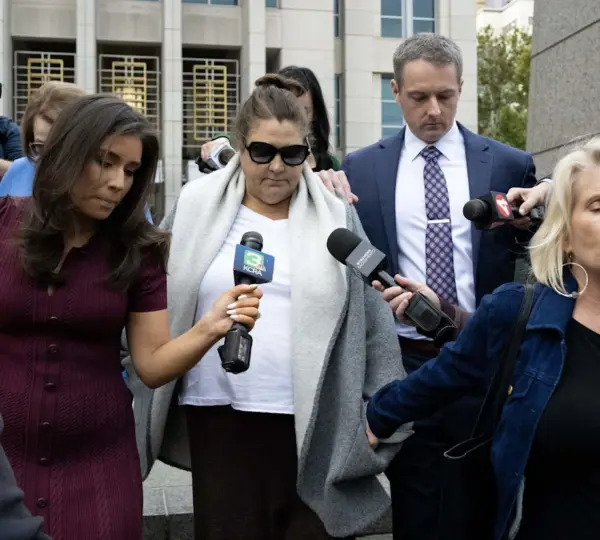
Alleged Tax Fraud Involving Over $1 Million in Expenses
Another major component of the indictment involves Williamson’s tax filings. Prosecutors claim she reported more than $1 million in fraudulent business deductions. These deductions allegedly included luxury personal expenses such as:
-
Private jet flights
-
Luxury hotel accommodations
-
Designer handbags
-
Vacations and leisure travel
-
High-end personal services
Investigators argue that the pattern of deductions reveals a deliberate attempt to disguise personal indulgences as legitimate business costs.
Federal Officials Describe a Three-Year Investigation
The arrest follows what FBI officials call a “relentless, highly coordinated investigative effort.”
FBI Special Agent in Charge Sid Patel stated:
“This case represents three years of extensive investigative work. Our commitment to uncovering fraud and corruption remains unwavering.”
Similarly, IRS Criminal Investigation Special Agent in Charge Linda Nguyen stated that Williamson “disguised personal luxuries as business expenses,” calling the scheme a significant example of the type of financial misconduct her agency prioritizes.
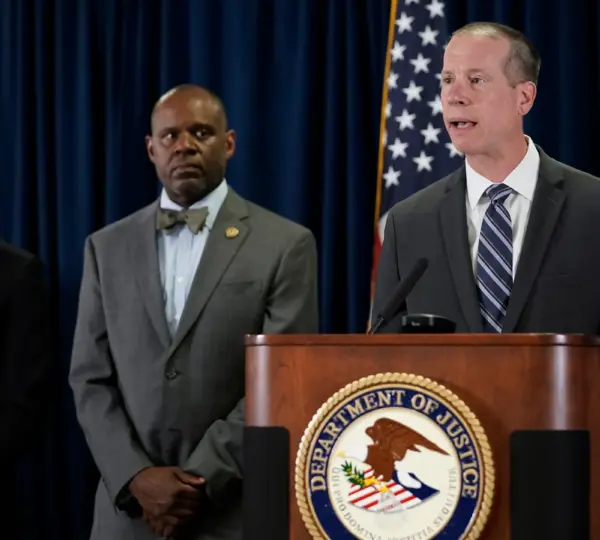
A 23-Count Indictment With Potentially Severe Penalties
The charges filed against Williamson include some of the most serious financial crimes in federal law. According to the U.S. Attorney’s Office, the indictment lists:
-
18 counts of bank and wire fraud
-
Conspiracy to commit bank and wire fraud
-
Conspiracy to defraud the United States
-
Filing false tax returns
-
Obstruction of justice
-
Making false statements to the FBI
Each bank-fraud and wire-fraud count carries a maximum of 20 years in federal prison, meaning that, if convicted on all charges, Williamson could theoretically face decades behind bars. While federal sentencing guidelines generally result in lower penalties, the severity of the charges underscores the gravity of the allegations.
How the Political World Is Reacting
News of Williamson’s arrest has already generated strong reactions among political leaders, analysts, and commentators. Many describe the case as one of the most significant federal corruption investigations involving a senior California government official in recent years.
Key questions now emerging include:
-
What did state officials know, and when?
-
Were there warning signs that were overlooked?
-
Will state law enforcement conduct its own review?
-
Could this lead to calls for reforms in political finance oversight?
Political analysts note that while no evidence implicates Governor Newsom, the arrest of his former chief of staff is likely to draw intense media scrutiny and political pressure.
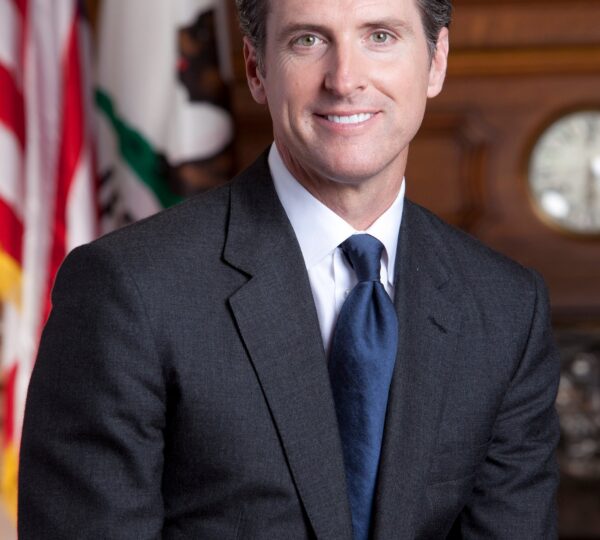
A Case That Could Trigger Reform in Political Finance Oversight
Experts in campaign finance and public administration argue that the Williamson case may serve as a catalyst for new regulatory measures. Proposed reforms could include:
-
More rigorous auditing of dormant political accounts
-
Stricter reporting requirements for political committees
-
Enhanced monitoring of financial activities tied to public officials
-
Increased transparency in business entities associated with political operatives
Some analysts also believe the case may encourage greater collaboration between state agencies and federal investigators to identify early signs of misconduct.
The Human Side of a Political Scandal
Beyond the legal proceedings and political implications, the case also has a personal dimension. Williamson, once regarded as a highly disciplined and trusted leader, now faces a long, challenging, and uncertain legal journey. Her reputation, career, and legacy have been fundamentally altered.
Colleagues who once praised her as a strategic powerhouse now express shock and disbelief at the allegations. Supporters argue that she deserves due process, while critics say the indictment reveals long-standing issues rooted in the intersection of politics and money.

23/09/2025. New York. USA. Britain’s Secretary of State for Energy Security and Net Zero, Ed Miliband meets Governor of California, Gavin Newsom, at the British Consulate General during New York Climate Week. Picture by Maximilian Steyger / DESNZ
What Happens Next
The legal process for Williamson is only beginning. In the coming months, the following are expected:
-
Formal court appearances
-
Potential plea negotiations
-
Pretrial motions and evidence reviews
-
Continued document analysis by federal investigators
-
Possible cooperation agreements from co-defendants
If the case goes to trial, the proceedings could take a year or more to conclude.
Conclusion: A Case That Will Shape California Politics for Years
Dana Williamson’s arrest serves as a powerful reminder of how vulnerable political systems can be to financial misconduct—and how seriously federal authorities pursue allegations of fraud and corruption. While Williamson is presumed innocent until proven guilty, the breadth and depth of the indictment ensure that this case will remain under intense public and political scrutiny.
Whether viewed as a cautionary tale, a catalyst for reform, or one of the most consequential scandals to emerge from Sacramento in recent memory, the outcome of this investigation will likely influence California politics, public trust, and institutional oversight for years to come.
FBI Arrests Gavin Newsom’s Former Chief of Staff as Federal Authorities Reveal Extensive Financial Scheme
Dana Williamson, once one of California’s most influential and respected political strategists, now faces the full weight of a federal indictment. Her arrest on Wednesday marks a dramatic turn in a career that spanned decades at the highest levels of state government. According to federal prosecutors, Williamson is accused of orchestrating a complex, multi-year financial scheme involving political funds, falsified business records, fraudulent tax filings, and efforts to conceal her actions from investigators.
Her indictment, which includes 23 federal charges, has drawn national attention—not only because of the scale of the allegations but also because Williamson served as the chief of staff to Governor Gavin Newsom during nearly the entire period in which the alleged misconduct occurred. For many, the case raises larger questions about political accountability, internal oversight, and the vulnerabilities within systems that handle campaign and public-related finances.
A Trusted Adviser With a Long Political History
Before her arrest, Williamson was widely viewed as one of the most experienced political hands in California. She built her reputation under former Governor Jerry Brown, serving as both a cabinet secretary and senior adviser. She later transitioned to Newsom’s administration, stepping into the role of chief of staff in 2022.
In Sacramento, she was known for her organizational discipline, strategic thinking, and influence over key initiatives. Her job required navigating legislative priorities, managing the Governor’s staff, coordinating with state departments, and maintaining the operational flow of the Governor’s Office.
Given the power and responsibility of that position, the allegations have magnified public interest in the case.

The Alleged Misuse of a Dormant Political Campaign
At the center of the indictment is a dormant political campaign account that prosecutors say Williamson and her associate, Greg Campbell, exploited. According to the U.S. Attorney’s Office, the pair transferred approximately $225,000 out of the fund by routing the money through multiple business entities, effectively laundering the origin of the funds.
The payments were then labeled as compensation for a “no-show job,” meaning the work being paid for was never actually performed. Prosecutors say the purpose of the arrangement was to disguise the political funds as legitimate business income.
The complexity of the transactions, the use of multiple entities, and the deliberate nature of the documentation all point, according to investigators, to a calculated effort to hide the financial trail.
How the Scheme Allegedly Operated Behind the Scenes
Court documents outline a methodical process that allowed the defendants to hide the true source of the funds. The indictment describes:
-
Funds withdrawn from the dormant campaign
-
Transfers routed through shell companies
-
Invoices created for nonexistent services
-
Bank transactions structured to appear legitimate
-
A pattern of financial movement designed to avoid detection
Prosecutors assert that the operation was not a momentary lapse in judgment but a sustained effort that unfolded over a period of nearly three years.

The Timeline That Raises Questions
According to investigators, the alleged scheme ran from February 2022 to September 2024—a timeframe that overlaps almost exactly with Williamson’s service as Newsom’s chief of staff. This detail has prompted political analysts to begin questioning:
-
How the scheme went undetected for so long
-
Whether internal financial controls were insufficient
-
Why the dormant campaign account was vulnerable to abuse
-
What safeguards exist to prevent similar misconduct in the future
While no evidence currently links Governor Newsom to the scheme, the proximity of the alleged misconduct to his administration has raised inevitable political concerns.
PPP Loans and Alleged Attempts to Deceive Investigators
The indictment also includes allegations tied to the Paycheck Protection Program (PPP)—a federal pandemic relief initiative designed to help small businesses maintain payroll during COVID-19. Prosecutors claim that Williamson obtained PPP funds under false pretenses and later attempted to hide irregularities in the loan documentation.
When she received a civil subpoena in early 2024, Williamson allegedly responded by creating:
-
Fake contracts
-
Backdated agreements
-
Fabricated business documentation
These actions, according to the indictment, were intended to mislead federal authorities and obstruct the ongoing investigation.

Alleged Tax Fraud Involving Over $1 Million in Expenses
Another major component of the indictment involves Williamson’s tax filings. Prosecutors claim she reported more than $1 million in fraudulent business deductions. These deductions allegedly included luxury personal expenses such as:
-
Private jet flights
-
Luxury hotel accommodations
-
Designer handbags
-
Vacations and leisure travel
-
High-end personal services
Investigators argue that the pattern of deductions reveals a deliberate attempt to disguise personal indulgences as legitimate business costs.
Federal Officials Describe a Three-Year Investigation
The arrest follows what FBI officials call a “relentless, highly coordinated investigative effort.”
FBI Special Agent in Charge Sid Patel stated:
“This case represents three years of extensive investigative work. Our commitment to uncovering fraud and corruption remains unwavering.”
Similarly, IRS Criminal Investigation Special Agent in Charge Linda Nguyen stated that Williamson “disguised personal luxuries as business expenses,” calling the scheme a significant example of the type of financial misconduct her agency prioritizes.

A 23-Count Indictment With Potentially Severe Penalties
The charges filed against Williamson include some of the most serious financial crimes in federal law. According to the U.S. Attorney’s Office, the indictment lists:
-
18 counts of bank and wire fraud
-
Conspiracy to commit bank and wire fraud
-
Conspiracy to defraud the United States
-
Filing false tax returns
-
Obstruction of justice
-
Making false statements to the FBI
Each bank-fraud and wire-fraud count carries a maximum of 20 years in federal prison, meaning that, if convicted on all charges, Williamson could theoretically face decades behind bars. While federal sentencing guidelines generally result in lower penalties, the severity of the charges underscores the gravity of the allegations.
How the Political World Is Reacting
News of Williamson’s arrest has already generated strong reactions among political leaders, analysts, and commentators. Many describe the case as one of the most significant federal corruption investigations involving a senior California government official in recent years.
Key questions now emerging include:
-
What did state officials know, and when?
-
Were there warning signs that were overlooked?
-
Will state law enforcement conduct its own review?
-
Could this lead to calls for reforms in political finance oversight?
Political analysts note that while no evidence implicates Governor Newsom, the arrest of his former chief of staff is likely to draw intense media scrutiny and political pressure.

A Case That Could Trigger Reform in Political Finance Oversight
Experts in campaign finance and public administration argue that the Williamson case may serve as a catalyst for new regulatory measures. Proposed reforms could include:
-
More rigorous auditing of dormant political accounts
-
Stricter reporting requirements for political committees
-
Enhanced monitoring of financial activities tied to public officials
-
Increased transparency in business entities associated with political operatives
Some analysts also believe the case may encourage greater collaboration between state agencies and federal investigators to identify early signs of misconduct.
The Human Side of a Political Scandal
Beyond the legal proceedings and political implications, the case also has a personal dimension. Williamson, once regarded as a highly disciplined and trusted leader, now faces a long, challenging, and uncertain legal journey. Her reputation, career, and legacy have been fundamentally altered.
Colleagues who once praised her as a strategic powerhouse now express shock and disbelief at the allegations. Supporters argue that she deserves due process, while critics say the indictment reveals long-standing issues rooted in the intersection of politics and money.

23/09/2025. New York. USA. Britain’s Secretary of State for Energy Security and Net Zero, Ed Miliband meets Governor of California, Gavin Newsom, at the British Consulate General during New York Climate Week. Picture by Maximilian Steyger / DESNZ
What Happens Next
The legal process for Williamson is only beginning. In the coming months, the following are expected:
-
Formal court appearances
-
Potential plea negotiations
-
Pretrial motions and evidence reviews
-
Continued document analysis by federal investigators
-
Possible cooperation agreements from co-defendants
If the case goes to trial, the proceedings could take a year or more to conclude.
Conclusion: A Case That Will Shape California Politics for Years
Dana Williamson’s arrest serves as a powerful reminder of how vulnerable political systems can be to financial misconduct—and how seriously federal authorities pursue allegations of fraud and corruption. While Williamson is presumed innocent until proven guilty, the breadth and depth of the indictment ensure that this case will remain under intense public and political scrutiny.
Whether viewed as a cautionary tale, a catalyst for reform, or one of the most consequential scandals to emerge from Sacramento in recent memory, the outcome of this investigation will likely influence California politics, public trust, and institutional oversight for years to come.